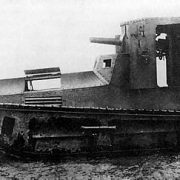The prototype of the Mark III Valentine Infantry Tank was produced on February 14 - Valentine's Day - 1940, and Valentines continued to be produced until 1944.
During that time, over 8,000 of these tanks were built, some in Canada.
There were 11 different Marks and some variants that were used for special purposes. Variants of the
Read more
Mark III Valentine Infantry Tank












